1121 High St
Armadale, VIC 3143
https://www.amarumelbourne.com.au
Ah Amaru, the darling du jour of the Melbourne food scene. Not only did it win itself a coveted 3 hats from the Good Food Guide for 2023, its in-house talent, Cameron Tay-Yap, also co-won young chef of the year (along with Lily McGrath from my beloved Movida). Talk about over-achieving. With these lofty standards set before even stepping foot into the restaurant, does the Sensory Menu ($330pp) live up to expectations? Yes… but also no. It’s hard to fault the offerings, which boast the freshest, most premium ingredients, done justice by truly inventive flavour combinations and interesting techniques. The service also deserves a shout-out; everyone exuded so much warmth and knowledge that I had no hesitation in asking them about their fancy hand-made knives, with the expectation that they would be able to tell me all I wanted to know (which of course they did, and they even pretended it wasn’t an obnoxious question). So what’s the rub? Although this was a very enjoyable meal, I came away feeling like it lacked that wow factor. At the risk of sounding incredibly privileged, this felt like just any other fine-dining degustation, with nothing to distinguish it. This is of course, incredibly unfair, as every aspect of Amaru is at the top of its game. But for the price tag, I guess I was hoping for something a little more unforgettable.
Rating: 17/20 – excellent all-rounder, though light on the fanfare.
Best bits: the food is often bought out by the chef, and I was lucky enough to have a good old natter with Cameron when he came by. for his part, he was an excellent sport, and super humble about his insane amount of talent. if you’re reading this, hope your wedding went well!

Marigold, Carrot, Finger Lime, Bargamot
To start, a flurry of snacks that is often my favourite part of any degustation (they seem to agree too, judging by sister restaurant Auterra which is nothing but snacks). Starting strong is the Marigold, Carrot, Finger Lime, Bargamot, the chewy smoked carrot and fresh herbs an energetic contrast to the buttery Pyengana cheddar sablé.

Organic Radish, Bonito, Horseradish, Crème Fraiche
The Organic Radish, Bonito, Horseradish, Crème Fraiche is a super fun play of textures and temperatures. Served on ice, the hollowed-out radish is crunchy, peppery, and icy cold. It forms a delightful contrast to the whipped mousse texture of the filling, which is salty and umami, with just enough creaminess to avoid this bite from becoming too sharp.

Kohlrabi, Sunflower Seed, Desert Lime Kosho
The Kohlrabi, Sunflower Seed, Desert Lime Kosho was unexpected, and great fun. The thin, sheet of crunchy pickled kohlrabi enrobed an unexpectedly creamy centre of sunflower seed hummus, which got richer by the second, and left its chickpea-based cousin for bust.

Chickpea, Swede, Fermented Peppers
Conversely, the Chickpea, Swede, Fermented Peppers was a little forgettable. The tostada topped with smoky cream cheese and a mild, sweet fermented pepper caramel was tasty, but unremarkable.
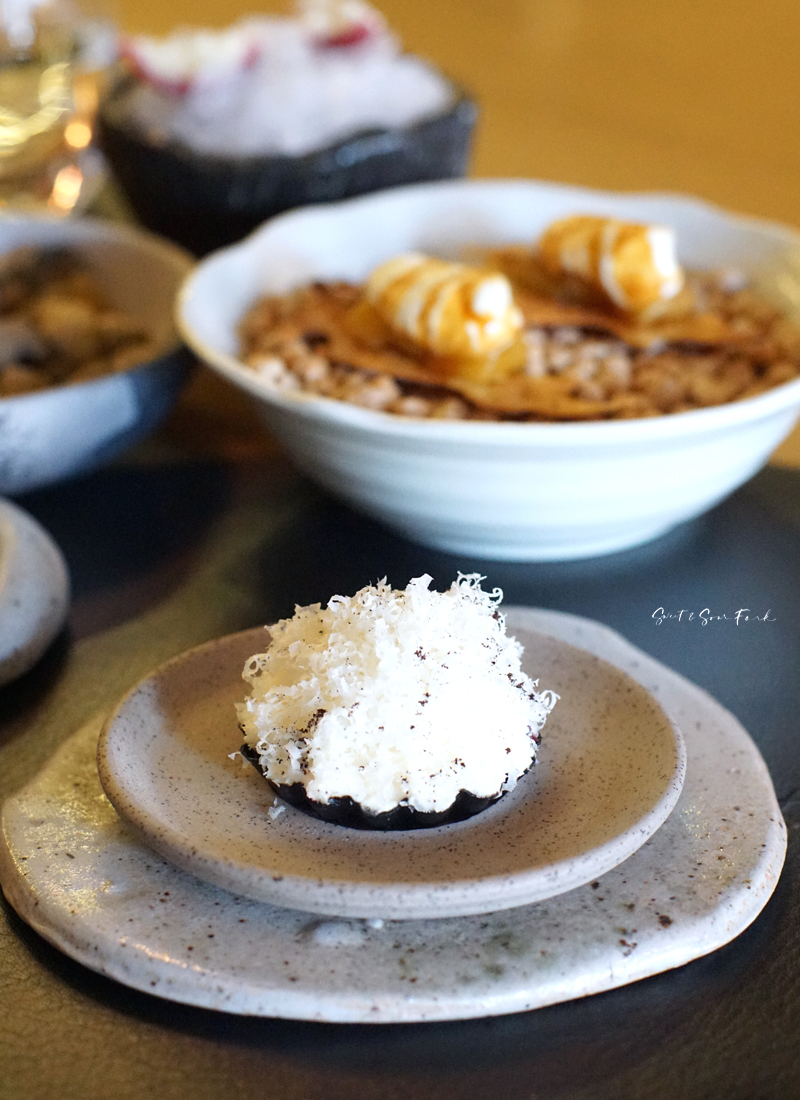
Sea Lettuce, Beetroot, Skipton Eel, Quandong
Rounding at the snacks was a punchy tart of Sea Lettuce, Beetroot, Skipton Eel, Quandong. Unlike its predecessor, I’d argue that this one was too much, the concentrated earthy flavours of the beetroot, and the salty brine of the eel becoming overwhelming after the first couple bites.

Heirloom Melons, Victorian Almonds, Ajo Blanco
The first of the mains – the Heirloom Melons, Victorian Almonds, Ajo Blanco – was absolutely stunning in presentation. A trove of jewel-bright melon was clustered like pearls at the bottom of a gold-flecked bowl, bringing to mind the rainbow-hued tapioca seen in Asian desserts. A dash of smooth, slightly savoury melon cucumber broth turns to dish into a game of excavation, with each bite cool, crisp, and refreshing, indulged by the occasional creaminess of silken tofu.

Mud Crab, Asparagus, Spring Garlic
The Mud Crab, Asparagus, Spring Garlic was easily my dish of the day. The sweet, succulent shellfish drizzled with a rich garlic butter sauce, contrasting with the green, earthy notes of new season asparagus, showcases the most delicious flavours of the season.

King George Whiting, Peas, Butter Beans, Citrus
The King George Whiting, Peas, Butter Beans, Citrus was a perfectly cooked bit of fish, with pearly meat and a thin, crisp skin. That aside however, I thought this was relatively uninspiring.

Western Australian Marron, Seaweed, Bitter Lettuce, Clams
Western Australian Marron, Seaweed, Bitter Lettuce, Clams is another commonly seen theme in high-end modern Australian restaurants. This time around, the plump marron tail is shrouded with charred lettuce, and served in a pool of velvety, umami-heavy broth. Not groundbreaking, but incredibly tasty.
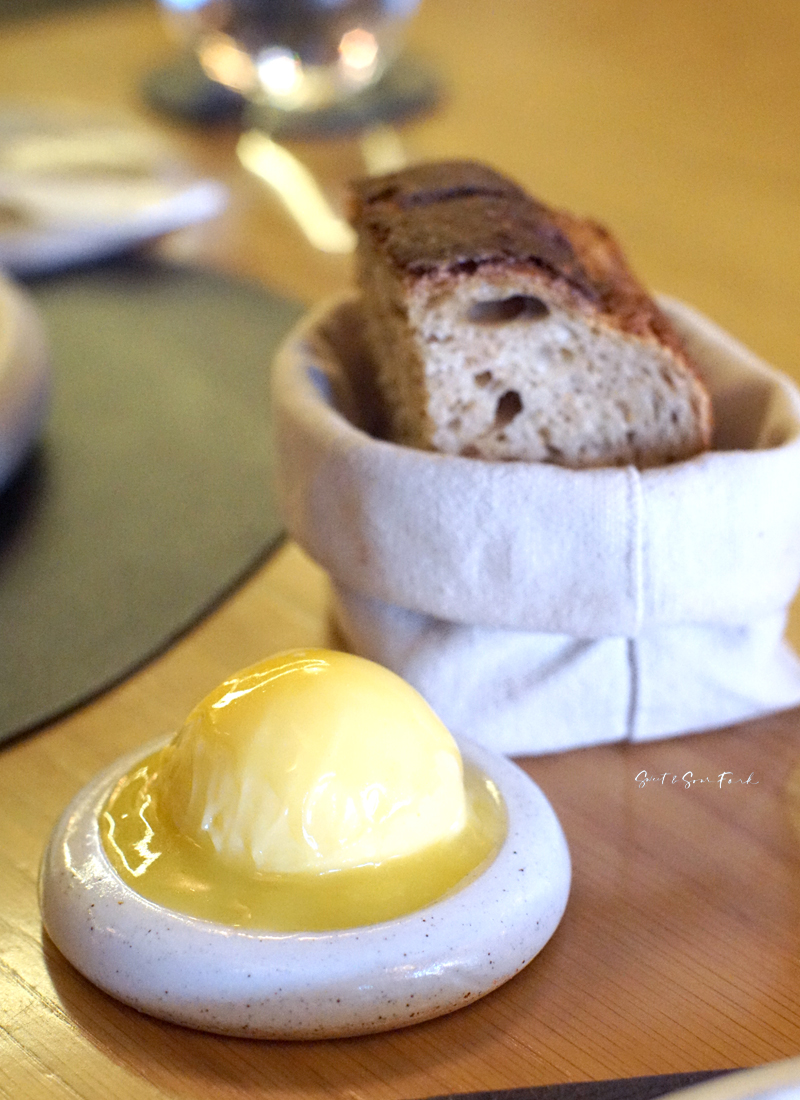
House Sourdough, Honey Mead Vinegar
As someone who has eyes bigger than their stomach, especially when it comes to carbs, I love that they serve their bread course towards the end of the savouries, hence neatly avoiding the regret of being too full to enjoy the sweets. With that said though, the House Sourdough, Honey Mead Vinegar is worth the regret of overeating. The bread is perfectly decent, but what really makes it exceptional is the golf ball-sized scoop of cultured butter, its mellow milkiness combining with a treacly, malty fermented honey that’s drizzled at the table, right in front of my greedy eyes.

Dry Aged Duck, Apricot, Witlof, Native Juniper
Rounding out the mains is the Dry Aged Duck, Apricot, Witlof, Native Juniper. The fatty bird is deftly balanced out by the fruity and bitter notes of the jus, though there’s still plenty of indulgence to be had, especially in the accompanying duck meatball, which is full of succulent, meaty goodness.
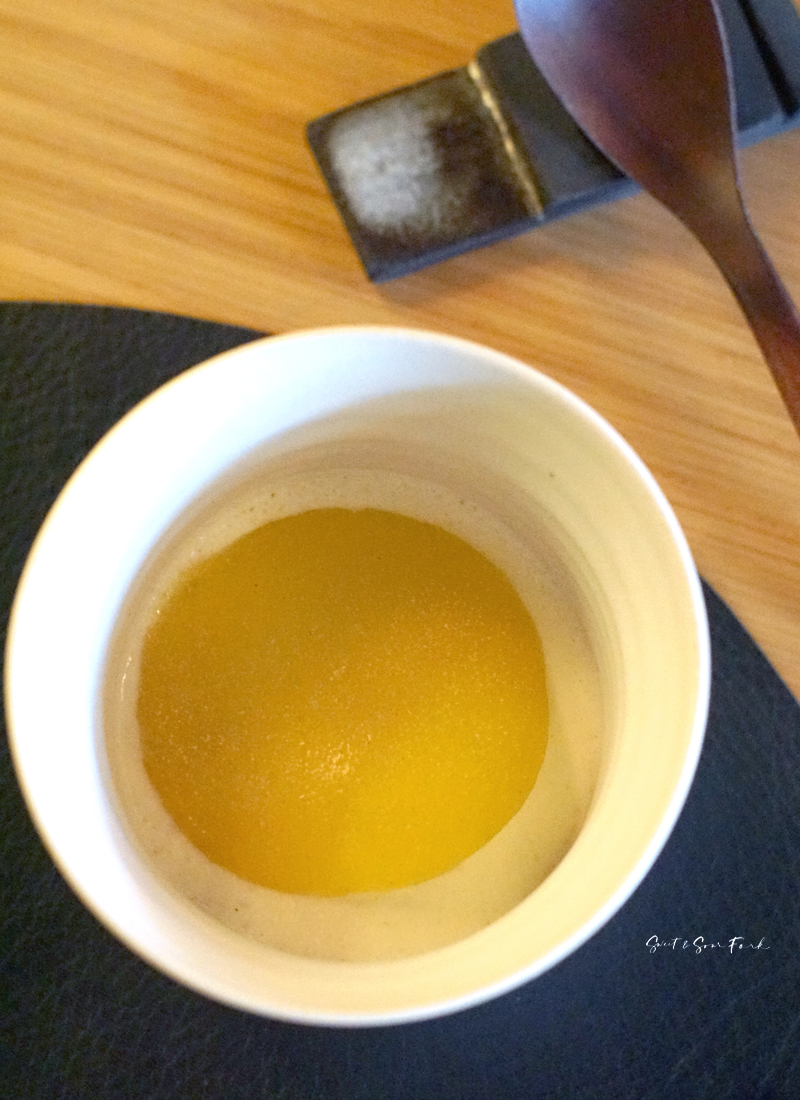
Bees Wax, Camel Milk, Mandarin
The first dessert course – the Bees Wax, Camel Milk, Mandarin – is the most unusual I’ve ever had. The flavours – light and milky, with a hint of floral and a hint of citrus – are nothing new; what really makes it stand out is the disc of beeswax and olive oil at the top, which is absolute unique with the subtle waxy film it leaves on the palate, discernible even against the crunch of praline and icy sorbet hidden underneath the aerated mousse. I wouldn’t say I loved it, but it was very much worth trying.

Rainforest Cherry, Koji, Davidson Plum, Saltbush
A little less controversial is the Rainforest Cherry, Koji, Davidson Plum, Saltbush, which is a delicate confection of nutty brown rice koji sorbet, adorned with tangy glacé cherries, earthy taro twill, and the unexpected bitterness of fried saltbush leaves. It was a refined yet fun way to close out the meal.

Goat Milk Cheesecake
And look! It’s a bonus cake! Seeing as it’s a special occasion and all. This is a little Goat Milk Cheesecake, the pungency of the dairy mellowed by the summery sweetness of mango sorbet. It is elegant, beautiful, and worthy of being a dessert of its own accord,

Shiitake Fudge, White Truffle
If you’ve ever had one of the odd soft serves concocted by Auterra, you’ll know that the first petite four of Shiitake Fudge, White Truffle is a lot tastier than it sounds. And indeed, the sweetness of the confection was mellowed out by, but also simultaneously highlighted by the earthiness of the mushroom, and a pinch of flaky sea salt rounds out this very elegant take on a traditional sweet.
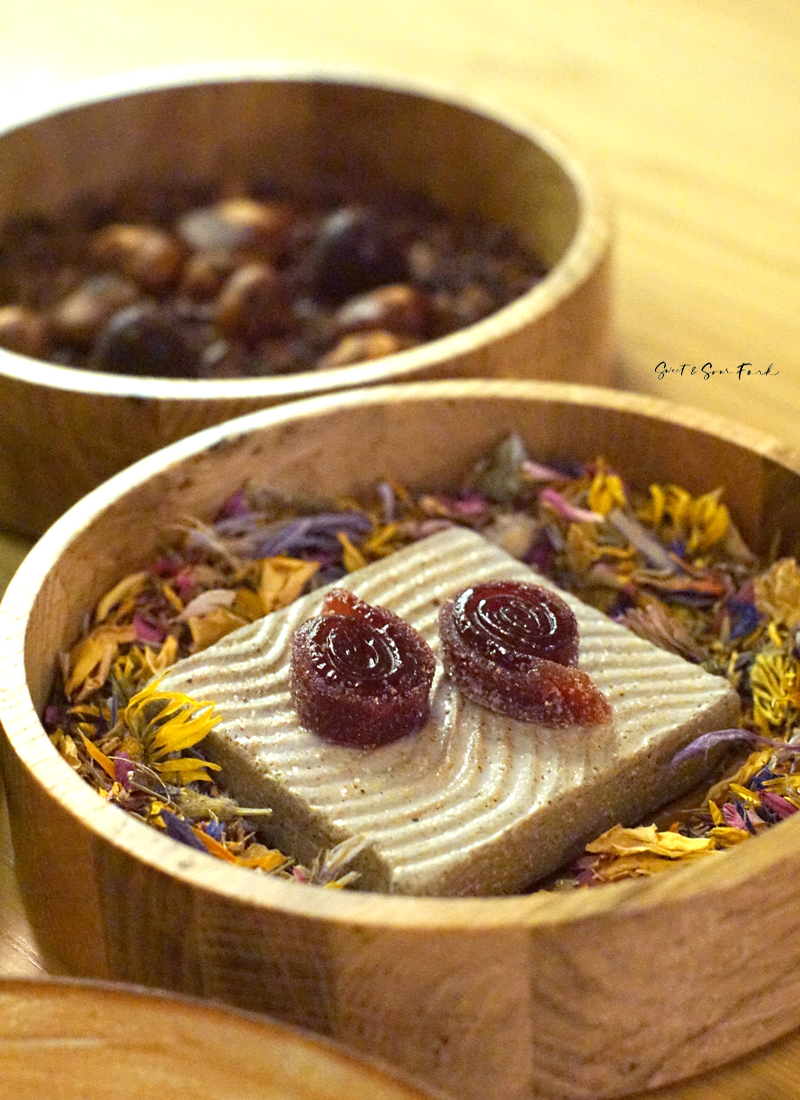
Rhubarb, Rosella
Speaking of nostalgia, the Rhubarb, Rosella is the adult’s take on a fruit roll-up with its bright tangy flavour, and an enjoyably jelly-like consistency that won’t pull out your teeth, unlike the original.
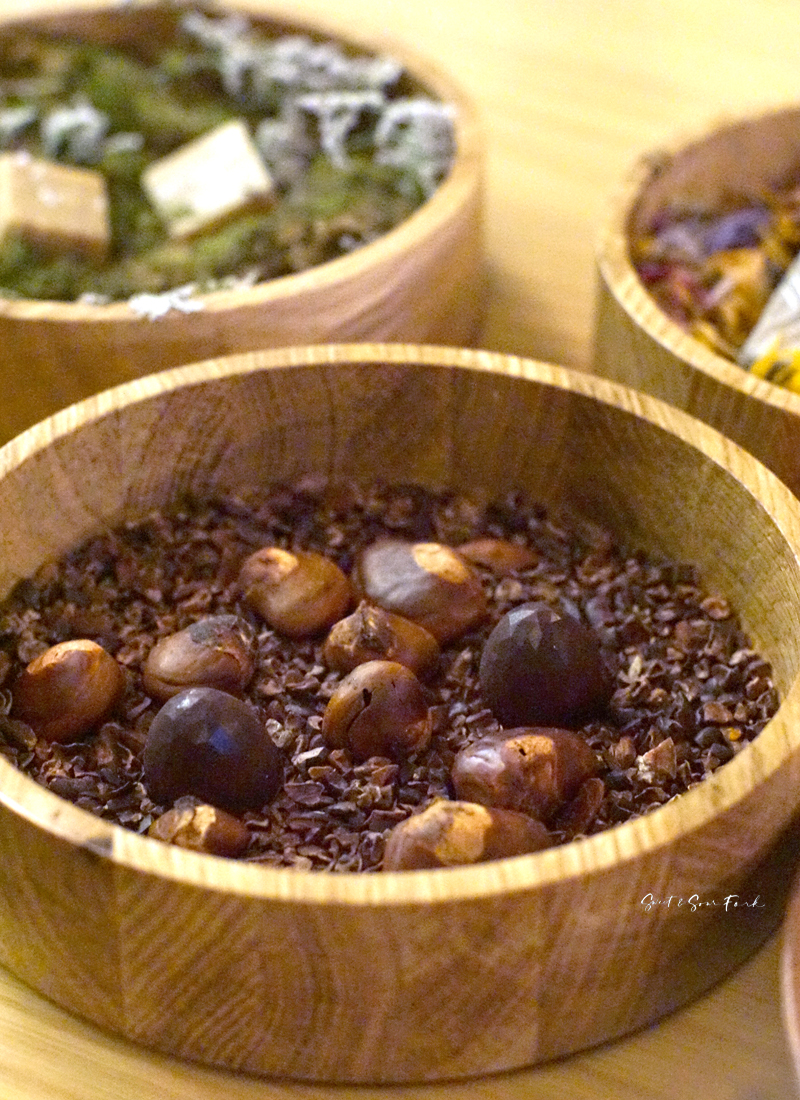
Chocolate, Native Lychee
The last treat is the Chocolate, Native Lychee, which was a dark chocolate praline that made for a very austere finish to the meal. I wish there was a little more sweetness, and a stronger taste of lychee, which was all but overwhelmed by the prominent cocoa.

Elderflower Bellini ($15)/Gold and Tonic ($15)
As I expect from a quality fine-diner these days, Amaru has a small but considered non-alcoholics list. The Elderflower Bellini ($15) is an extremely delicate extract of white peaches, and though it’s an appropriately summery sip, ends up being too insubstantial. On the other hand, the Gold and Tonic ($15) was an absolute banger. The marigold and mint, suspended in bubbles of ginger-tinged tonic water, was an ecstasy of sunshine and good times.




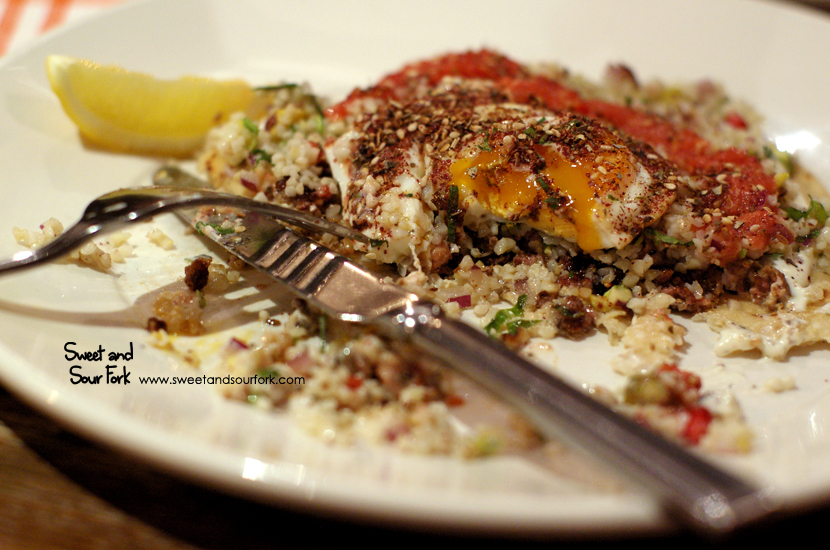
No Comments